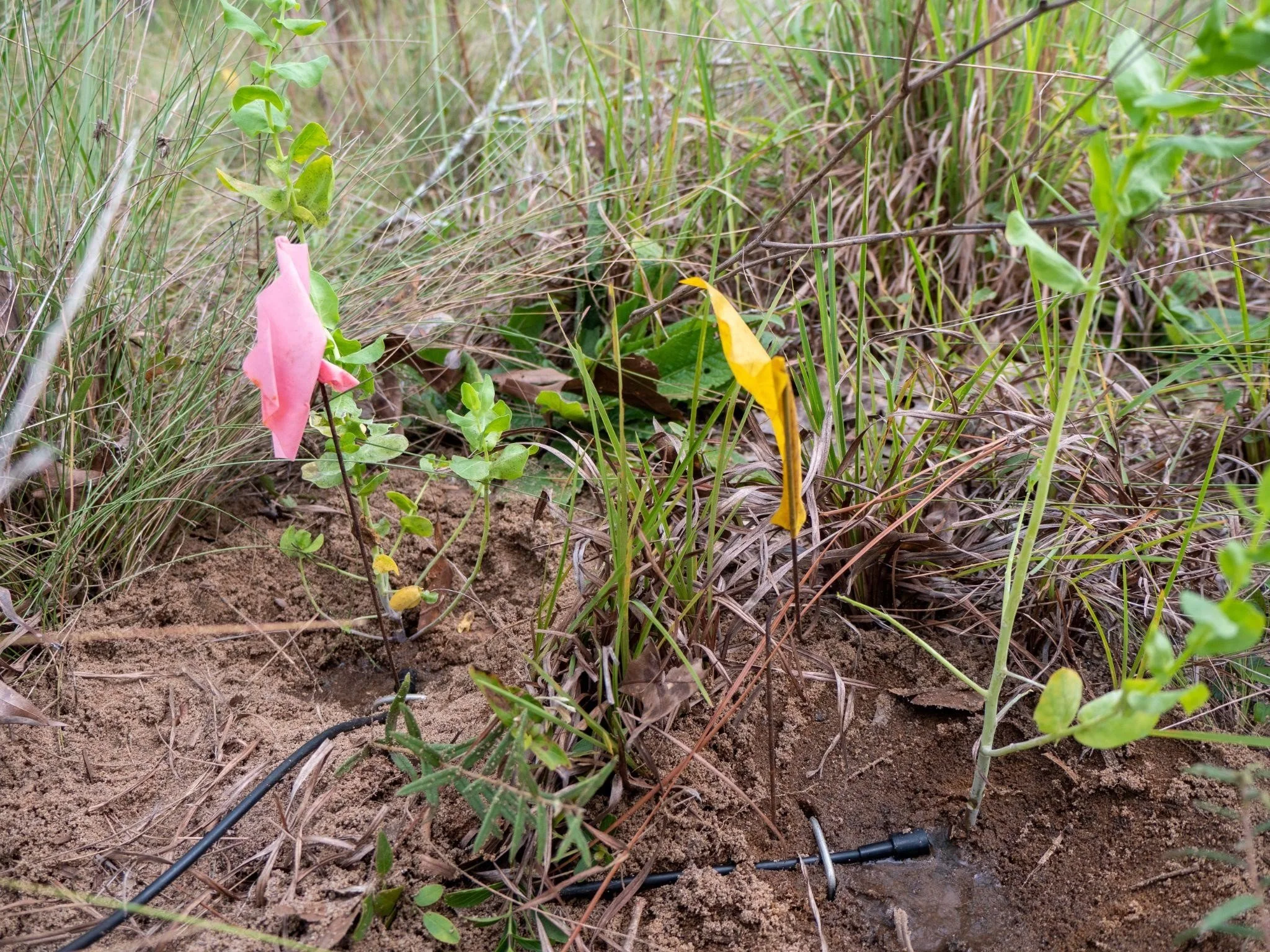Partnering to Protect Plants: Clasping Warea
(Warea amplexifolia)
By Rachel Townsend
ACT Land Management Specialist - Natural Resources Intern Program Coordinator
The ACT natural resources interns recently assisted on an exciting multi-agency project. Organized by Cheryl Peterson at Bok Tower, a small group of nature lovers powered together to plant the federally endangered Clasping Warea (Warea amplexifolia) on St. Johns River Water Management District property. Along with the help of the Florida Forest Service and Florida Fish and Wildlife Conservation Commission (FWC) volunteers, we were able to plant over 100 germinated Warea plants with the hopes of establishing a new community.
We all know the phrases “it takes a village” and “many hands make light work,” but my oh my does land management truly lean on the efforts of one another to accomplish our mutual goals. It took our Clasping Warea team of ten about three hours to establish irrigation lines and to plant 110 plants. We all joked as the afternoon summer sunshine began to lift our collective energy how it would have taken an entire day for Cheryl to complete the project on her own. With the help of others, land managers are able to cover much more ground in a quicker timeline, which, in our world, makes all the difference.
Clasping Warea is endemic to Florida and has only been known to grow on the northern third of the Lake Wales Ridge. Due to the annual wildflower’s sensitivity and the degradation of xeric sandhills in the region, it has found itself a spot on the federally endangered list. One of the causes of these declining populations is a lack of fire on the landscape. Sandhills are a pyrogenic natural community, meaning they depend upon fire to thrive: the longleaf pine overstory, diverse herbaceous understory, and the multitude of wildlife from gopher tortoise to bobwhite quail all require regular fire in order to maintain their equilibrium. Despite a lack of fire – whether it be due to a decrease in proper weather parameters, an increase in smoke sensitive areas, or a need for additional resources – there is still hope for restoring groundcover species with the seedbank they’ve left behind. Research done by the U.S. Fish and Wildlife Service states:
The Warea Tract at Seminole State Forest was formerly considered a sandhill community; however, years of fire suppression have allowed leaf litter to accumulate. In 2004, the northwest block of the tract was burned and as a result, some oaks were killed, leaf litter on the ground was reduced, and large patches of bare ground were opened up (Cox 2006). In 2005, after the burn, one of the largest populations of W. amplexifolia was found on the northwest block.
To learn more about reestablishing the precarious species, click here for additional info on the Clasping Warea project.






